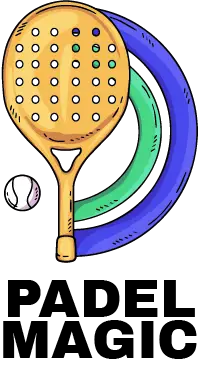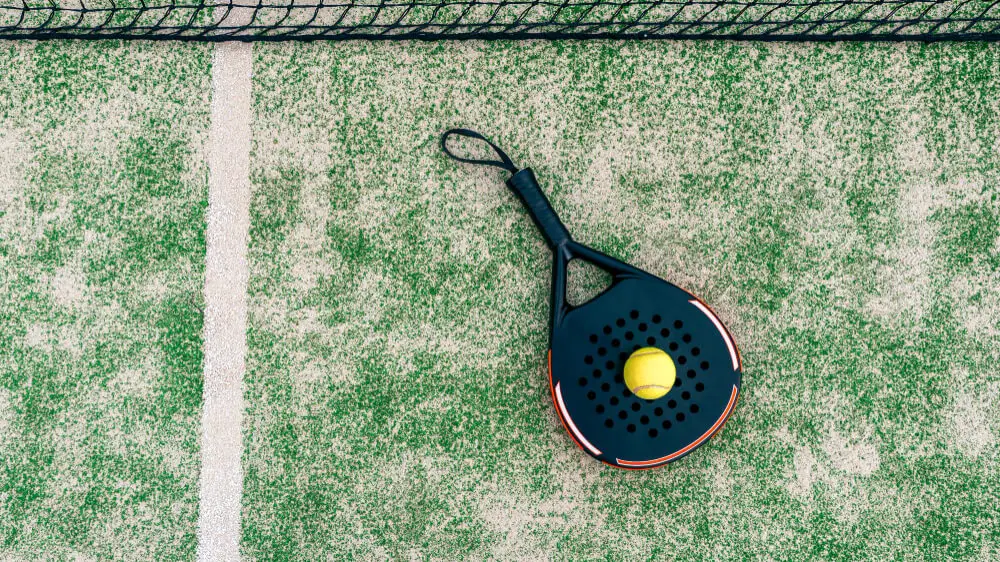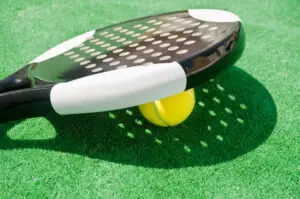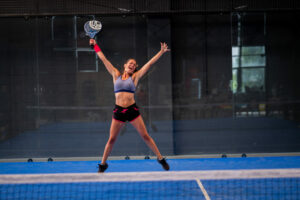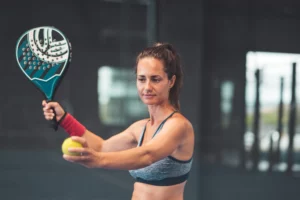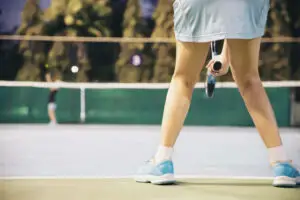Padel balls are more than just equipment; they’re the pulse of your game. Designed explicitly for padel, these balls differ slightly from tennis balls in size and pressure. Understanding these differences is crucial for every player, as the ball significantly influences the game’s dynamics and your playing style. Recognizing the unique features of padel balls is the first step in mastering the game.
Ball Comparison: Tennis, Padel, and Pickleball
Here’s a table comparing the key characteristics of Tennis Balls, Padel Balls, and Pickleball Balls:
| Aspect | Tennis Balls | Padel Balls | Pickleball Balls |
|---|---|---|---|
| Size | 6.7 cm diameter | 6.35 – 6.77 cm diameter | 73 – 75 mm diameter |
| Weight | Approx. 58 g | Approx. 56.0 – 59.4 g | Approx. 24.5 – 26.5 g |
| Bounce | 53-58 inches (from 100 inch drop) | 135-145 cm (from 255 cm drop) | 30-34 inches (from 78 inch drop) |
| Material | Rubber with wool/felt covering | Rubber with felt covering | Plastic with 26-40 round holes |
| Typical Use | Tennis courts | Padel courts | Pickleball courts |
Padel Balls Features
Material and Construction
Padel balls are crafted with specific materials for optimal performance. The core is usually made of rubber, offering a balance between firmness and flexibility, essential for the unique bounce and speed of the game.
The outer layer is typically a durable felt, similar to tennis balls, but adjusted for padel’s specific needs. This construction ensures the ball can withstand the quick, sharp movements typical in padel matches.
Size and Weight: Tailoring the Game
Regarding size and weight, padel balls have their own set standards. They are generally a tad smaller and less pressurized than tennis balls. This difference might seem minor, but it significantly impacts how the game is played, influencing factors like bounce height and speed control. Understanding these nuances can help you use the ball to your tactical advantage.
Types of Padel Balls: From Brand to Skill Level
Diverse Brands, Diverse Choices
Various brands have stepped into the arena of padel ball manufacturing, each bringing something unique to the table. From high-end options known for their longevity and consistent performance to more budget-friendly choices that still deliver quality, there’s a brand for every preference.
Selecting Balls for Your Skill Level
Not all padel balls are created equal, especially when considering player skill level. Beginners might benefit from balls that offer more control and a slower pace, helping them hone their skills without being overwhelmed. Intermediate players could look for a balanced ball that offers a mix of control and power, while advanced players might prefer balls that maximize speed and responsiveness for a high-paced, aggressive game.
Choosing the right padel ball is about more than just picking any option off the shelf; it’s about selecting a tool that complements and enhances your style of play. Whether you’re just starting out or competing at higher levels, the right ball can make a significant difference in your game.
Factors Affecting Padel Ball Performance
The Role of Temperature and Altitude
- Temperature Impact: Just like in other sports, the performance of padel balls changes with temperature. In warmer conditions, the balls tend to expand slightly, becoming softer and bouncier. This can add power to your shots but might reduce control. Conversely, in colder temperatures, balls become harder and less responsive, requiring more effort for powerful shots.
- Altitude Effects: At higher altitudes, the air is thinner, which means less resistance against the ball. This results in balls flying faster and further, altering the game’s dynamics. In such conditions, choosing a ball with less pressure might help in maintaining control.
Durability and Maintenance: Maximizing Ball Life
- Longevity Factors: The durability of a padel ball depends on its material quality and how often it’s used. Generally, balls used in frequent, intense matches wear out faster.
- Maintenance Tips: Store your balls in a cool, dry place to maintain their pressure. Regularly check for wear and tear, such as loss of felt or changes in shape, and replace balls when necessary to ensure consistent play quality.
Choosing the Right Padel Ball
How to Make the Perfect Choice
- Consider your playing environment – indoor or outdoor, temperature and altitude.
- Assess your skill level and playing style. Beginners might prefer slower balls for better control, while advanced players may opt for faster balls for a more dynamic game.
- Consider the ball’s pressure and bounce. Experiment with different types to find your preference.
Practice vs. Tournament Balls
- For practice sessions, durability might be more important than performance. Choose balls that can withstand extensive use.
- In tournaments, go for high-quality balls that offer a balance of control and power, adhering to your playing style and conditions.
Padel Ball Rules and Regulations
Adhering to Official Standards
- Official padel tournaments have specific ball standards, usually regarding size, weight, and bounce. These standards ensure fairness and consistency in play.
- Familiarize yourself with these regulations, especially if you’re competing at higher levels or in official tournaments. Using the right ball not only enhances your performance but also keeps your play within the sport’s rules
Frequently Asked Questions:
How often should I replace my padel balls?
Padel balls typically need replacement after every 3-4 weeks of regular play. However, this varies based on how often you play and the intensity of your games.
Can I use tennis balls for padel?
While similar, tennis balls are not ideal for padel as they have different weights and pressures. For the best experience, it’s recommended to use balls specifically designed for padel.
Do different brands of padel balls make a big difference?
Yes, different brands offer varying levels of quality, bounce, and durability. Trying out different brands can help you find the ball that best suits your play style.
Are there special padel balls for indoor and outdoor play?
Generally, the same balls are used for both indoor and outdoor play, but environmental factors like temperature and altitude might affect ball performance.
How can I tell if a padel ball is no longer good to use?
If the ball has lost its bounce, appears visibly damaged or deformed, or feels different when hit, it’s time for a replacement
